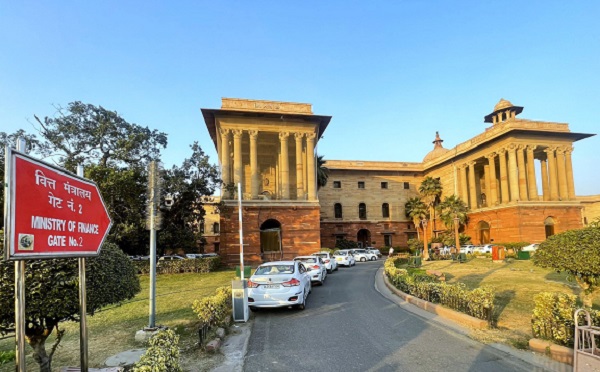.png)

Ajay Srivastava, founder of Global Trade Research Initiative, is an ex-Indian Trade Service officer with expertise in WTO and FTA negotiations.
March 4, 2025 at 5:03 AM IST
India’s high tariffs have long been a point of contention in global trade debates, particularly for developed economies like the United States. The loudest criticism often comes from the United States, which frequently points to India’s tariff structure as protectionist and restrictive. What these arguments fail to acknowledge is that India’s tariffs, unlike many of America’s recent trade actions, are entirely WTO-compliant, rooted in long-standing agreements that reflect the economic asymmetries between developing and developed nations.
India’s tariff policies reflect its evolving economic priorities, which include protecting domestic industries, encouraging self-sufficiency, and managing external trade imbalances. These are standard objectives for any developing economy, particularly one still nurturing its industrial base and seeking to balance import dependence with domestic manufacturing growth. India is not alone in this approach — much of the developing world operates within similar frameworks, using tariffs as both policy tools and negotiating levers in global trade discussions.
In contrast, developed economies, particularly the United States, operate with substantially lower average tariffs. This difference stems not from superior economic virtue but from decades of economic dominance that allowed them to shape global supply chains and build internationally competitive industries. With established global brands, highly productive industries, and secure access to global markets, developed economies benefit from low-tariff environments that maximise market access for their companies.
The imbalance between developed and developing economies was built into the WTO’s foundational structure in 1995. When the WTO was created, developed nations pressed hard for new disciplines on intellectual property (TRIPS), liberalisation of services trade, and rules governing agricultural trade, all of which broadly benefited wealthier economies. In return, developing countries — including India — retained the right to higher tariffs, recognising their need for policy flexibility to develop nascent industries and manage economic vulnerabilities.
This arrangement was neither accidental nor imposed — it was a negotiated compromise that reflected the global economic landscape at the time. All WTO members, including the United States, accepted it. India’s tariffs are thus not unilateral protectionism but a product of the grand bargain that allowed the WTO to exist in its current form.
The real deviation from WTO principles has emerged not in New Delhi but in Washington. Over the past decade, the United States has embraced unilateral trade actions that sit uneasily with WTO rules. Whether it is the Section 232 tariffs on steel and aluminium, the 10% tariffs imposed on Chinese imports, or the broader shift towards reciprocal tariffs, many of these measures violate the core principles of non-discrimination and multilateral discipline that underpin the WTO system.
This divergence is not simply a matter of technical compliance. It reflects a deeper shift in how the United States approaches global trade. Faced with persistent trade deficits, eroding industrial competitiveness, and a political environment increasingly hostile to globalisation, the U.S. has moved away from rule-based trade diplomacy towards bilateral pressure and economic coercion. By contrast, India, even while pursuing policies aimed at self-reliance and import substitution, continues to operate within the boundaries established by the WTO’s development provisions.
India’s tariff structure is neither unusual nor arbitrary. It reflects the strategic space developing countries were promised within the WTO framework — space that remains essential for countries still building competitive capacity. Developed economies, having already captured global market share, no longer require these tools. Their opposition to India’s tariffs is less about the principles of free trade and more about discomfort with the economic rebalancing that rising powers like India represent.
The debate over India’s tariffs will persist, particularly as global supply chains fragment and economic nationalism gains traction across developed economies. But the argument that India’s tariff regime is protectionist or unfair ignores both the historical context and the multilateral commitments that define today’s global trading system.
For India, retaining the policy flexibility embedded in WTO rules is not merely defensive — it is an essential component of its economic strategy, ensuring that domestic industries can grow, absorb technology, and compete globally on India’s terms. The real test for global trade is not whether developing countries use the policy space they were promised, but whether developed economies — particularly the United States — will continue to respect the rules-based order they once championed.
End
Also Read:
India’s Tariff Dilemma Under Trump 2.0 — Retaliate, Appease Or Pivot?
Myths And Legends From The Trumpian Fantasy On Trade And Tariffs
America’s Oligarchs Are Donald Trump’s Achilles’ Heel
Tariffs, PILLS Act, And India’s Pharma Pivot
Trump’s Tit-For-Tat Tariff Plan Calls For Agility




